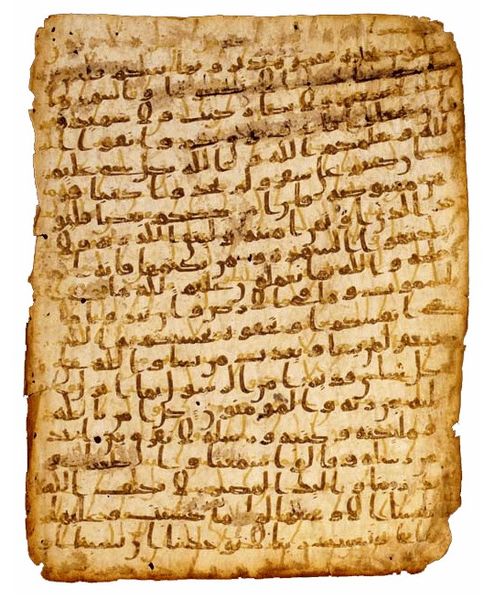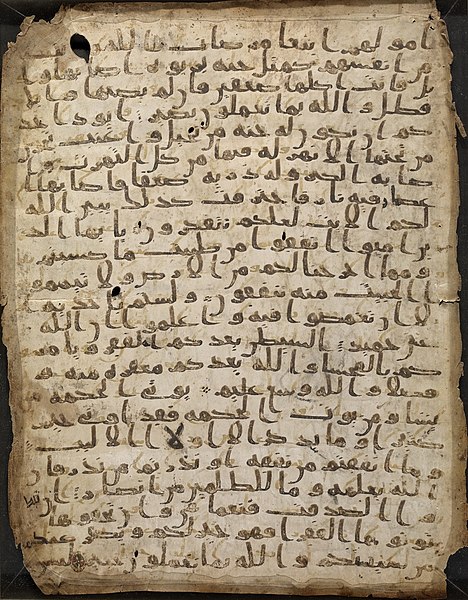The Sanaa palimpsest or Sanaa Quran is one of the oldest Quranic manuscripts in existence. Part of a sizable cache of Quranic and non-Quranic fragments discovered in Yemen during a 1972 restoration of the Great Mosque of Sanaa, the manuscript was identified as a palimpsest Quran in 1981 as it is written on parchment and comprises two layers of text.The upper text entirely conforms to the standard Uthmanic Quran in text and in the standard order of surahs or "chapters".
The lower text, which was erased and written over by the upper text, but can still be read with the help of ultraviolet light and computer processing, contains many variations from the standard text. The sequence of its chapters corresponds to no known Quranic order.
Recto side of the Stanford '07 folio. The upper text covers Quran 2 (al-Baqarah), verses 265–271.
The lower text of the above folio, recovered through X-Ray Fluorescence Imaging at Stanford University. The lower text covers Quran 2:191-196.
A fragment showing part of Surat Ta-Ha
Early Quranic manuscripts
In Muslim tradition the Quran is the final revelation from God, Islam's divine text, delivered to the Islamic prophet Muhammad through the angel Jibril (Gabriel). Muhammad's revelations were said to have been recorded orally and in writing, through Muhammad and his followers up until his death in 632 CE. These revelations were then compiled by first caliph Abu Bakr and codified during the reign of the third caliph Uthman so that the standard codex edition of the Quran or Muṣḥaf was completed around 650 CE, according to Muslim scholars. This has been critiqued by some western scholarship, suggesting the Quran was canonized at a later date, based on the dating of classical Islamic narratives, i.e. hadiths, which were written 150–200 years after the death of Muhammad, and partly because of the textual variations present in the Sana'a manuscript. With the discovery of earlier manuscripts which conform to the Uthmanic standard however, the vast majority of Western revisionist theories regarding the historical origins of the Quran have fallen out of favor and been described as "untenable".

Sura al-Baqarah, verses 282–286, from an early Quranic manuscript written on vellum (mid-late 7th century CE)
The recto of the first folio of codex Parisino-petropolitanus.
Close up of part of folio 2 recto of Birmingham Quran manuscript
Sana'a manuscript






